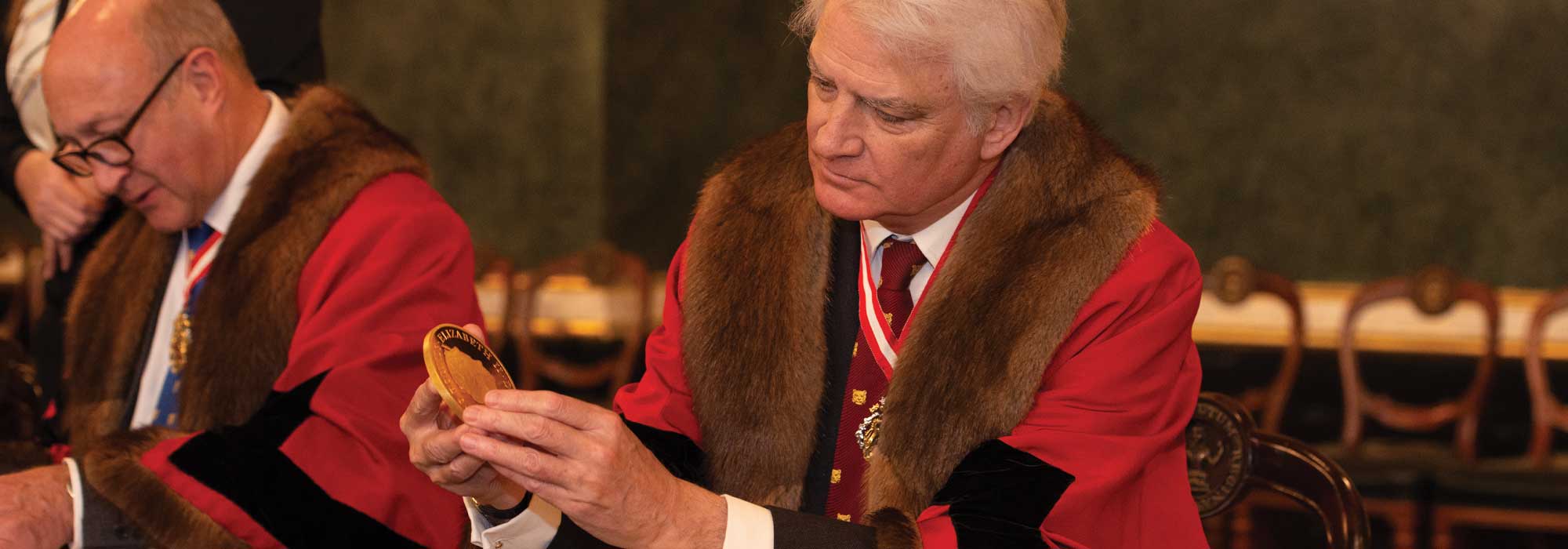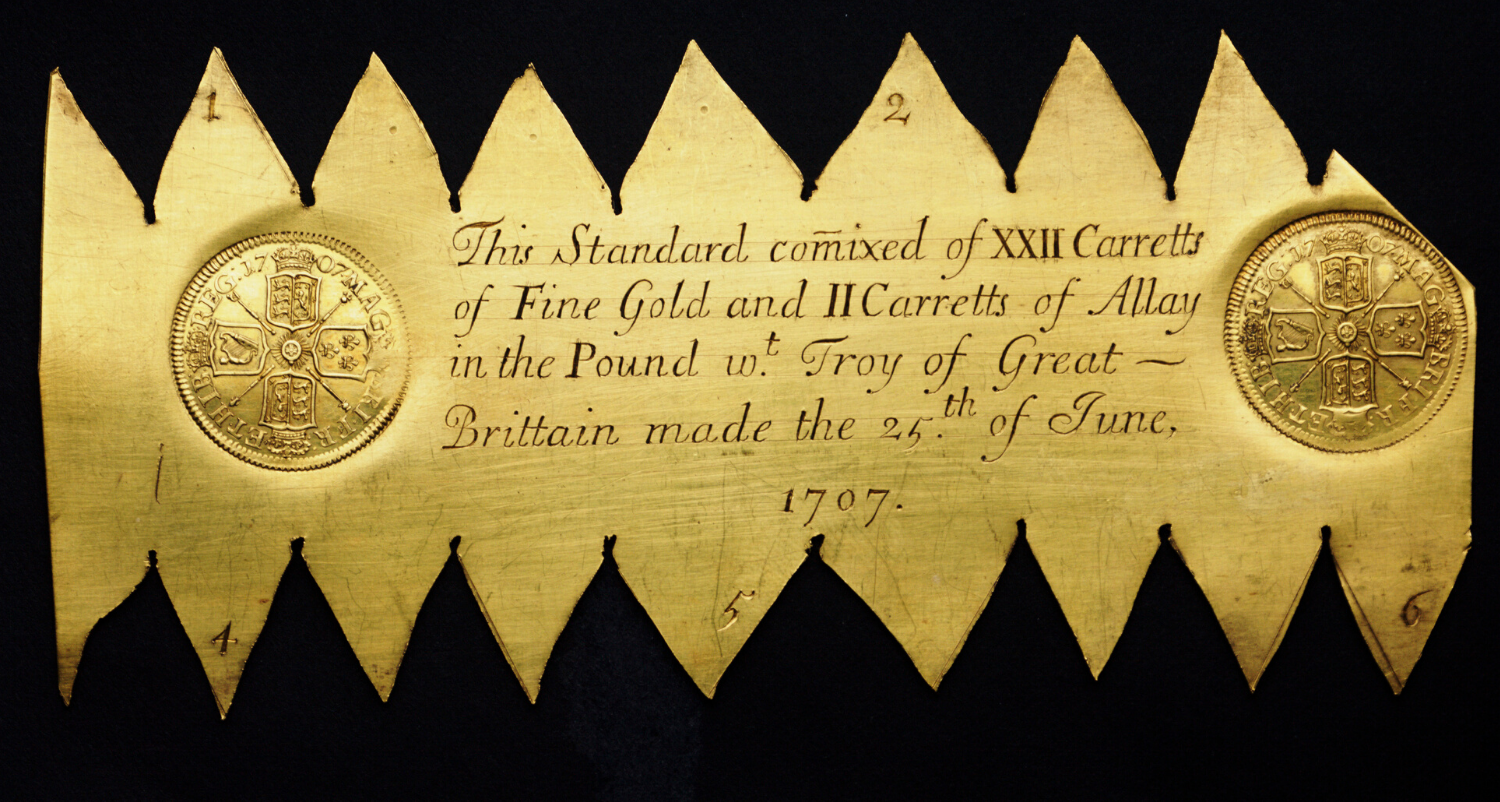The word 'pyx'
The word 'pyx' comes from the Latin word 'pyxis' or small box. In this case, it refers to the chests used to transport the coins. Throughout the year, in a procedure that has barely changed since the reign of Henry III, coins are randomly selected from every batch of each denomination struck, sealed in bags of 50 and locked away in the Pyx boxes for testing at the Trial.

These gold and silver trial plates date from 1477 onwards and are a vital part of The Royal Mint’s history.
'Pyx packets' are taken from the chests and each member of the jury must select one coin at random and place them into a ceremonial copper bowl in front of them for testing. Following the ceremony, the Trial moves into the Assay Office where coins are weighed, measurements are taken and the composition of the metals used is tested.
Once all the coins have been examined and the Assay Office has established whether The Royal Mint has met all requirements, the Trial's court is reconvened at Goldsmiths’ Hall, about three months after the ceremony. For the final phase of the Trial of the Pyx, the verdict of the Assay Office is provided to the jury and is read aloud by the Clerk of the Goldsmiths' Company at the instruction of the Senior Master and Queen’s Remembrancer – an ancient post created in 1154 by Henry II (and the oldest judicial position still in existence).
The medieval protocols of the Trial are a living link to a grandly ceremonial past. The opulent surroundings of the Hall of the Worshipful Company of Goldsmiths’ in London, the judicial robes worn by the jury, the ancient wooden chests and ceremonial copper bowls; the sense of occasion seems to seep into the coins themselves.

Each coin handled by the jury is suffused with a sense of ceremony that sets it apart from their flawless counterparts – these are the actual coins subjected to the rigours of a process unchanged since the time of Henry III.
Every blemish is a reminder of the rigours of the oldest and most exacting minting quality process still in existence today.




